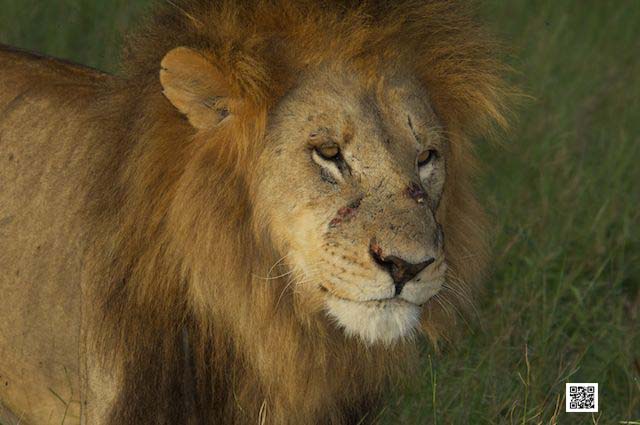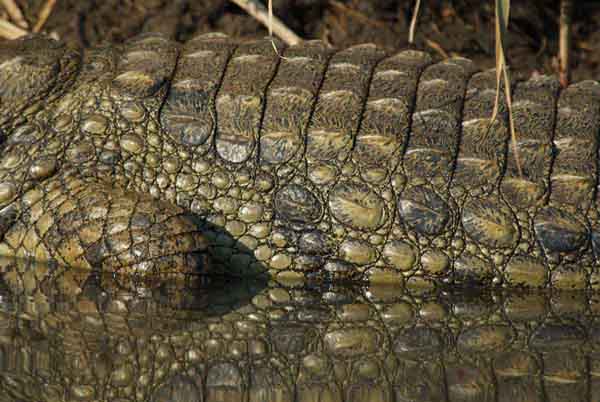22 September 2013
Want a great safari on a budget? Collaborate with friends.
28/09/13 12:27 Filed in: Photographic Safari

When you go on safari in Africa you should have a good safari, actually a great safari with lots of wildlife photography fun, fantastic sightings, good food and comfortable accommodation. That might sound like not being cheap, but it can be possible on a budget when you team up with friends.
It is a big difference in price sharing a 4x4 jeep with 2 or 6 people. The jeep and driver/guide cost always the same, but when 6 people share the costs its only little for each of them.
Try to share a room. Pretty much all lodges and camps charge single supplement, which is almost as much as paying for another person. Do not go for the cheapest accommodation, as their food might not be really good. Go for good mid-range and the price will be fine to.
Don’t forget about the park fees. They can make a big portion of the budget. If you want to see the Great Migration, you must go to the Masai Mara and pay USD 80 per person per day park fee, but if you are happy with any other national park you can safe money with the lower park fees.
Go for it, but do not make the group too big. 6 travelers is just right to keep it nice and fun.
Happy photographic safari going!
Ute Sonnenberg for www.rohoyachui.com
Get this useful design tool for your photo creations
27/09/13 14:16 Filed in: Photo Tips

The hobby photography or wildlife photography does not end with taking the pictures. Once back from photographic safari, a holiday on the beach or from a friend’s wedding, the post-production starts. We make photo books, calendars, cards, posters, fine art prints and many more creations where we use our photographs.
There are templates that help us with it, yet even with templates sometimes we struggle to find the right picture for a page in a book or a collage or some other occasion we want to create something with a picture. Often the problem is in the not matching colors of the picture with the background color or the color of illustrations or even the color of the text. Matching the colors can be a nerve-racking process, but it doesn’t have to be like that.
There is this lovely tool http://www.pictaculous.com/. This online tool helps you to find matching colors easily. Just upload the image and the tool does the rest. Try it. Its really easy.
Happy photo creating!
Ute Sonnenberg for www.rohoyachui.com
How does wildlife-reptile photography appeal to you?
26/09/13 13:54 Filed in: Photographic Safari

When you go on safari in Africa, you probably do not look forward to meet reptiles like snakes and other crawling friends. But they are beautiful animals and can be very interesting subjects for wildlife photography. It is pretty rare to see a snake at all on your safari. They disappear as soon as they feel a vehicle coming. But when you have the opportunity to see for example a python, this is a great sighting.
But there are more, like e.g. crocodiles and when you visit the Great Migration they will most likely play a major role in the Mara River crossing sightings. They are one of the reasons the crossing is so dangerous for the wildebeest, zebras and gazelles. Seeing a crocodile kill might not make them appeal to you more in the sense of lovable animals, but they are actually very beautiful and demanding subjects of wildlife photography. It is not that easy to take an interesting picture of a crocodile or snake. The right angle and light are crucial.
Maybe start with the lizards in your backyard and see how pretty they are and how challenging at photography subjects. But when you get the hang of it, you will see how beautiful the pictures can be.
Happy wildlife snapping!
Ute Sonnenberg for www.rohoyachui.com
How good are your wildlife photos really?
25/09/13 09:07 Filed in: Photo Tips

Maybe you have been on a photographic safari in Africa, you get home and your photos sorted and after hours behind the computer and a couple of hundreds of images further you start doubting your own photographer talent and skills. But should you?
Do you compare your wildlife photography with what you see on National Geographic or in the magazines? If you do so, be conscious that all these images are photoshopped and you can achieve similar results by photoshopping your images to.
But lets look at the essence. Do you love your images? Do they appeal to you? If you answer both questions with a yes, your images are great, because they are the images you love. They capture special moments of your safari, intimate moments with wildlife and nature and they will take you back to your adventure whenever you want to experience it again. Love your images; they are your memories.
Happy wildlife photography snapping!
Ute Sonnenberg for www.rohoyachui.com
How to develop a good bond with a wild Leopard
24/09/13 15:58 Filed in: Photographic Safari

Developing a bond with your photographic subject is essential for good photography and in wildlife photography that means developing a bond with the wild animals. It does not mean feeding wildlife or calling them or throwing something on them to get their attention. Bonding with wildlife goes through patience, trust and calmness.
Imagine being on a photographic safari in Kruger Park in South Africa. The game drive is in an open 4x4 jeep and lets say you are lucky and the only person on the vehicle. Your tracker and ranger find a leopard, lying in high grass under a tree. First of all this is great and you take a couple of pictures. The leopard is not doing anything, just lying there and the visibility is not too great and you think lets go, it is anyway not so good and he is doing nothing. That would be the wrong thing to do. Get yourself a spot in the shade with your vehicle and wait. Snap around a bit, try different settings and relax. Take in the silence, the smell of the grass and keep an eye on the leopard. The more you relax and tune into the environment the more the leopard will feel comfortable with you around him. You will end up feeling when he stands up before you see it. This is essential, because you won’t hear a leopard standing up, you won’t hear anything when a cat moves, not even a leave cracking. The leopard is now doing his thing and your patience will be rewarded with great wildlife photography and maybe even spectacular wildlife interaction.
Enjoy the bonding and the great images it will give to you.
Happy wildlife snapping!
Ute Sonnenberg for www.rohoyachui.com
4 Calls to Action for Your Wildlife Photography
23/09/13 16:33 Filed in: Photo Tips

Call to action is a term from marketing, but it can be useful for photography as well, as it is often tempting to postpone the stroll in nature until tomorrow and tomorrow and ….
Go now. There is no budget needed to go into the garden, to the park or on a stroll in the woods. It is refreshing, calming and recharging and practicing is always good for your wildlife photography. If you consider to go on photographic safari, the go now can also be an inform now with some search time on the Internet or in the bookstore. Whatever it is, your wildlife photography will benefit.
Buy now. This can be a tricky one, but can be a last push to get that zoom lens you need to properly photograph birds or the far away lion.
Share this. That is a lovely one for photography. Sharing your photographs, experiences and knowledge helps others and yourself. You always learn a lot yourself when teaching others.
Start your free trial. This means usually that one has to pay from a certain moment, but not with wildlife photography. Wildlife photography is always for free as nature is for free and wildlife is everywhere. If you haven’t started wildlife photography yet, try it and have fun.
Ready to go?
Happy wildlife snapping!
Ute Sonnenberg for www.rohoyachui.com
Why Share and Collaborate [in Under 100 Words]
22/09/13 15:18 Filed in: Photo Tips

We do not exist isolated; we are connected to the world around us. We can try to do all ourselves, but it will not bring us far.
By sharing and collaborating we grow and let grow, we learn and teach at the same time.
No matter what and where, with our team colleagues at the office, our family, our travel companions on photo safari, the other students on wildlife photography course, the people on the plane and the people at the other end of the world we are communicating with online, we constantly share and collaborate in order to make things work.
Sharing and collaborating also make you a better photographer. Use it.
Happy teaching and learning!
Ute Sonnenberg for www.rohoyachui.com